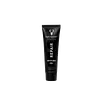What's inside
What's inside
 Key Ingredients
Key Ingredients

No key ingredients
 Benefits
Benefits

 Concerns
Concerns

 Ingredients Side-by-side
Ingredients Side-by-side

Aloe Barbadensis Leaf Juice
Skin ConditioningSimmondsia Chinensis Seed Oil
EmollientGlycerin
HumectantIsoamyl Laurate
EmollientCetearyl Alcohol
EmollientCetyl Alcohol
EmollientHydrolyzed Jojoba Esters
Skin ConditioningWater
Skin ConditioningCetearyl Olivate
Sorbitan Olivate
EmulsifyingButyrospermum Parkii Butter
Skin ConditioningPolysorbate 60
EmulsifyingCopernicia Cerifera Wax
Calcium Silicate
AbsorbentCarbomer
Emulsion StabilisingPersea Gratissima Fruit Extract
EmollientChamomilla Recutita Flower Extract
MaskingParfum
MaskingPhenoxyethanol
PreservativeEthylhexylglycerin
Skin ConditioningSorbitan Caprylate
EmulsifyingPropanediol
SolventBenzoic Acid
MaskingSodium Phytate
Benzyl Benzoate
AntimicrobialCitronellol
PerfumingCoumarin
PerfumingGeraniol
PerfumingHexyl Cinnamal
PerfumingHydroxycitronellal
PerfumingAloe Barbadensis Leaf Juice, Simmondsia Chinensis Seed Oil, Glycerin, Isoamyl Laurate, Cetearyl Alcohol, Cetyl Alcohol, Hydrolyzed Jojoba Esters, Water, Cetearyl Olivate, Sorbitan Olivate, Butyrospermum Parkii Butter, Polysorbate 60, Copernicia Cerifera Wax, Calcium Silicate, Carbomer, Persea Gratissima Fruit Extract, Chamomilla Recutita Flower Extract, Parfum, Phenoxyethanol, Ethylhexylglycerin, Sorbitan Caprylate, Propanediol, Benzoic Acid, Sodium Phytate, Benzyl Benzoate, Citronellol, Coumarin, Geraniol, Hexyl Cinnamal, Hydroxycitronellal
Water
Skin ConditioningGlycerin
HumectantPropanediol
SolventAcetyl Hexapeptide-8
HumectantPanthenol
Skin ConditioningBisabolol
MaskingAscorbic Acid
AntioxidantAllantoin
Skin ConditioningArgania Spinosa Kernel Oil
EmollientPrunus Amygdalus Dulcis Oil
Skin ConditioningSodium Hyaluronate
HumectantRetinyl Palmitate
Skin ConditioningAloe Barbadensis Leaf Juice
Skin ConditioningCollagen
MoisturisingXanthan Gum
EmulsifyingCarbomer
Emulsion StabilisingTriethanolamine
BufferingEthylhexylglycerin
Skin ConditioningPhenoxyethanol
PreservativeWater, Glycerin, Propanediol, Acetyl Hexapeptide-8, Panthenol, Bisabolol, Ascorbic Acid, Allantoin, Argania Spinosa Kernel Oil, Prunus Amygdalus Dulcis Oil, Sodium Hyaluronate, Retinyl Palmitate, Aloe Barbadensis Leaf Juice, Collagen, Xanthan Gum, Carbomer, Triethanolamine, Ethylhexylglycerin, Phenoxyethanol
Ingredients Explained
These ingredients are found in both products.
Ingredients higher up in an ingredient list are typically present in a larger amount.
Aloe Barbadensis Leaf Juice comes from leaves of the aloe plant. Aloe Barbadensis Leaf Juice is best known for helping to soothe sunburns. It is also anti-inflammatory, moisturizing, antiseptic, and can help heal wounds.
Aloe is packed with good stuff including Vitamins A, C, and E. These vitamins are antioxidants, which help fight free-radicals and the damage they may cause. Free-radicals are molecules that may damage your skin cells, such as pollution.
Aloe Barbadensis Leaf Juice also contains sugars. These sugars come in the form of monosaccharides and polysaccharides, folic acid, and choline. These sugars are able to help bind moisture to skin.
It also contains minerals such as calcium, 12 anthraquinones, fatty acids, amino acids, and Vitamin B12.
Learn more about Aloe Barbadensis Leaf JuiceCarbomer is a polymer of acrylic acid. Its main role is to create a gel consistency.
A high amount of carbomer can cause pilling or balling up of products. Don't worry, most products contain 1% or less of carbomer.
Ethylhexylglycerin (we can't pronounce this either) is commonly used as a preservative and skin softener. It is derived from glyceryl.
You might see Ethylhexylglycerin often paired with other preservatives such as phenoxyethanol. Ethylhexylglycerin has been found to increase the effectiveness of these other preservatives.
Glycerin is already naturally found in your skin. It helps moisturize and protect your skin.
A study from 2016 found glycerin to be more effective as a humectant than AHAs and hyaluronic acid.
As a humectant, it helps the skin stay hydrated by pulling moisture to your skin. The low molecular weight of glycerin allows it to pull moisture into the deeper layers of your skin.
Hydrated skin improves your skin barrier; Your skin barrier helps protect against irritants and bacteria.
Glycerin has also been found to have antimicrobial and antiviral properties. Due to these properties, glycerin is often used in wound and burn treatments.
In cosmetics, glycerin is usually derived from plants such as soybean or palm. However, it can also be sourced from animals, such as tallow or animal fat.
This ingredient is organic, colorless, odorless, and non-toxic.
Glycerin is the name for this ingredient in American English. British English uses Glycerol/Glycerine.
Learn more about GlycerinPhenoxyethanol is a preservative that has germicide, antimicrobial, and aromatic properties. Studies show that phenoxyethanol can prevent microbial growth. By itself, it has a scent that is similar to that of a rose.
It's often used in formulations along with Caprylyl Glycol to preserve the shelf life of products.
Propanediol is an all-star ingredient. It softens, hydrates, and smooths the skin.
It’s often used to:
Propanediol is not likely to cause sensitivity and considered safe to use. It is derived from corn or petroleum with a clear color and no scent.
Learn more about PropanediolWater. It's the most common cosmetic ingredient of all. You'll usually see it at the top of ingredient lists, meaning that it makes up the largest part of the product.
So why is it so popular? Water most often acts as a solvent - this means that it helps dissolve other ingredients into the formulation.
You'll also recognize water as that liquid we all need to stay alive. If you see this, drink a glass of water. Stay hydrated!
Learn more about Water